Painting, decorating and home improvement tips blog
Saving money on your energy bills
Posted by Adrian
December 21st, 2018
Saving money on your energy bills

Over the past few weeks the UK has endured some very cold weather including strong winds and several centimetres of snow. The first thing people do when we get this type of weather is turn on the heating and turn it up, but could you be doing things to stop the cold draughts and heat loss from your home?
If you lose heat from your house you are literally burning money, badly fitting doors and windows are often a major contributory factor to heat loss as well as badly insulated walls and loft spaces. So what can be done?
By spending a little bit of time and money you can reduce your electricity, gas or water utility bills. Many things you can do yourself if your are a keen DIYer or Handyman.
Doors and windows
Draughts from around doors and windows not only let cold in but can allow heat to escape, you can fit a self-adhesive rubber or foam seal around the window or door to shut onto to reduce draughts, fitting brush draught excluders on the bottom of a door will reduce the cold from coming under the door. Even fitting a simple key hole cover over a door lock will reduce heat loss.
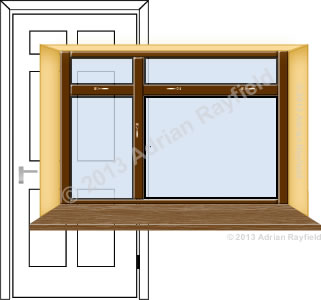
Ideally good fitting double glazed windows is the best option but these can be expensive to have fitted, but if you have single glazed windows you can still do more, such as fitting thick lined curtains and pulling them across mid afternoon as it gets dark and the temperature starts to drop. You could also fit secondary glazing throughout the winter months and remove it during the warmer summer months.
If you have a letterbox on your door consider fitting a draught proof flap on both sides, alternatively you can add a brush letterbox cover inside to reduce draughts and heat loss.
You can also buy, or make a draught excluder for the bottom of the door, these are often ‘sausage dogs’ if you buy them but can easily be made from and old pillow case and filled with old rags, whatever they are made from or the style they can reduce heat loss from the bottom of the door.
Lofts and Loft hatches
Heat rises so ensuring the loft space has enough insulation, current recommendations for mineral wool insulation is 270mm but other types of insulation may need more or less, check with the manufacturer. Also don’t forget flat roofs, they also need to be insulated.
Having a well fitted insulated and draught proofed loft hatch also can not be overlooked, no point in insulating the loft space then not doing the loft hatch. Attach insulation on the inside and fit a rubber seal for the hatch to shut onto, just like any other door.
Pipes and pipework
You can buy pipe lagging very cheaply and is easy to fit, it is often made from foam and can be fitted over the pipes, both hot and cold. You can also buy felt insulation but is harder to fit over installed pipework. If you buy the foam type just ensure you but the correct bore size for the size of copper pipe, normally either 15mm or 22mm.
Often an overlooked area is the outside, if you have pipes going outside, make sure the gaps around them are filled in, this includes plastic pipes such as waste pipes as well as copper pipes. If you have copper pies outside, lag these to stop them from freezing.
Radiators
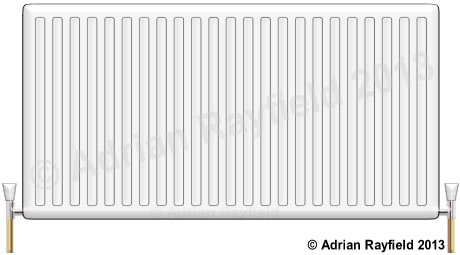
If you have radiators, make sure you bleed the air out of them, to tell if they need doing feel the top, middle and bottom, if the top is colder it is more than likely filled with air and need bleeding. This is a simple job and all you need is a bleed key, then open the bleed valve on the radiator a small amount until water comes out, then do the bleed valve up tight again.
If you have cold areas in your radiator you are not using the radiator efficiently and if you turn the heating up to compensate for the cold area on the radiator you are using more energy to heat the bottom of the radiator, bleed them and turn the heating down a bit.
Hot water tanks
Your hot water cylinder is where you store your hot water, if this isn’t insulated properly and you lose heat from it you will need to keep re-heating the water, so using more energy. The insulation should be at least 75mm thick, if it isn’t you can buy a hot water cylinder jacket to wrap around it.
Walls
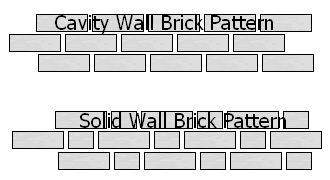
If your walls are not insulated but you have a cavity between the inner and outer walls it is worth insulating them, this will reduce the heat loss from your walls. If you are unsure if you have a cavity in you wall or if you are unsure if your walls have cavity wall insulation, if you can see your bricks, look at the pattern if it is regular you will more than likely have a cavity, if the bricks have alternate, that is if you can see a full length brick, then the end of a brick you may not have a cavity but a solid wall, check with a cavity wall insulation firm in your area.
If your house was built before or up to the 1920’s it is most likely to have solid walls, after this time it should have a cavity and any house built from the 1990’s will most likely have a cavity wall with cavity wall insulation.
As for the inside of the walls, you can line them with a thermal liner, this only really needs to be done on the exterior walls as it is fairly expensive, but can be done on all of the walls. By having a thermal liner it will help even more with the heat loss through your walls.
Solar Panels
If you wish to go a step further, you can install solar panels on your roof to help with your electricity bills, and even reduce your bills by feeding the grid with your unused electricity. Although initially expensive to install it is a long term investment.
Finally
Please remember that houses need to be ventilated to stop mould growth, wet and dry rot and to keep a healthy environment inside the house so please do not block any air bricks, window trickle vents or air vents such as those near a boiler.
With many of the ways to save money on your energy bills mentioned above, you may be able to get Government grants, financial support and even earn money such as if you install solar panels, so have a look around to see what you can get help with.
Tags: Cavity Wall, Door, Draught Excluder, Electric, Electricity, Gas, Insulation, Pipes, Radiators, Solar Panels, Solar Power, Thermal liner, Utility, Ventilation, Water, weather, Window
Posted in Home Improvements | No Comments »
Fitting a letterbox draught excluder
Posted by Adrian
November 27th, 2018
Fitting a letterbox draught excluder
If you have a letterbox fitted into your front door, you can help reduce heat loss and draughts if you be draught proof it. Modern doors such as PVCu door will come fitted with a letterbox pre-installed and will have a flap on the outside as well as the inside so no further draught proofing is required.
If however you have an older door and only a flap on the outside of the letterbox, for only a few pounds you can add an internal flap or a draught excluder. These are easy to fit and only take a few minutes.
These draught excluders are readily available at DIY and hardware stores. Once you have bought one you simply need a drill, drill bit and screwdriver, an optional extra is a small level to ensure you fit the excluder level. The screws should be in the packet when you buy the excluder.
Types of draught excluder
There are two types of excluder available, a brush type that has brushes that help stop drafts, the same idea as the brush excluder you fit to the bottom of the doors. Two rows of brushes reduce the draught from coming into your property. The other type is a brush with flap, these are slightly more expensive but do look neater.
To fit both types of excluder simply align on the door, using a level to ensure it is straight, then drill pilot holes to take the screws. Then simply screw the two or four screws into the door to compete the job.
Both types of letterbox draught excluder are fitted internally.
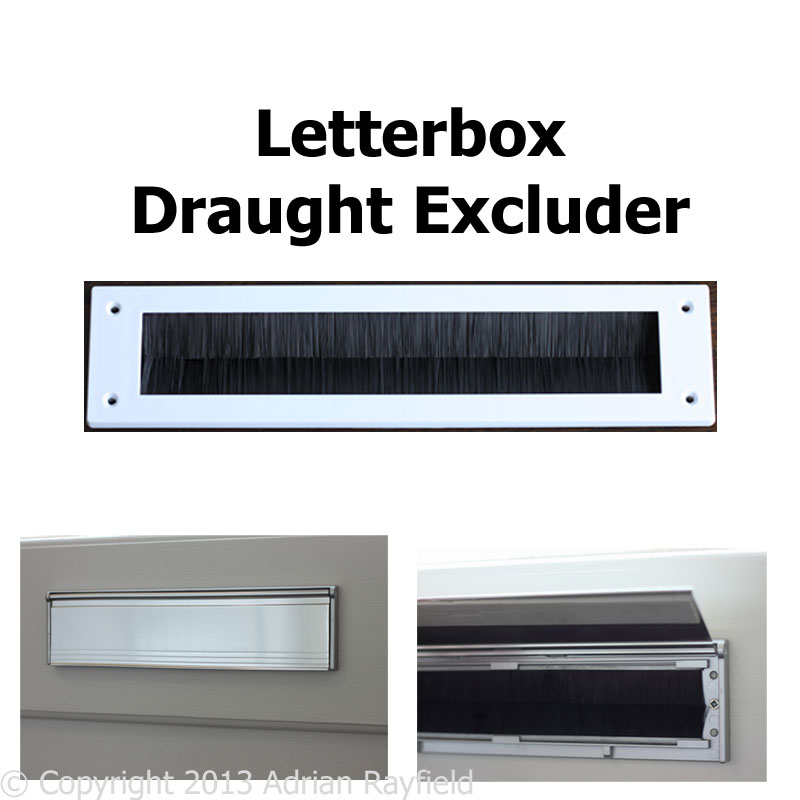
Tags: Door, draft, Draught Excluder, excluder, heating, letter box, Letterbox, Money, post box
Posted in Home Improvements | No Comments »
Autumn and winter jobs for around the home and garden
Posted by Adrian
October 31st, 2018

Autumn and winter jobs for around the home and garden
Winter is fast approaching and before the really cold and wet weather gets here now is the ideal time to do maintenance jobs around the home and garden in preparation for winter. So if you have a spare half day or a weekend and the weather is a lovely autumnal day why not get out in the winter sun and do those jobs ready for the winter months.
Leaves
Leaves look nice when they are golden brown and red whilst they are still on the trees but as they fall off they can be a real pain. They can make driveways and paths slippery under foot, block gutter and downpipes and generally make the garden look untidy.
So a good sweep up can make the world of difference and as an added bonus you can bag them up and compost them ready to be spread of the vegetable patch the following year.
Gutters and downpipes
As mentioned above, leaves can build up and block gutters and downpipes creating drainage problems and potentially damp issues in the property. If you have a ladder or access to one or maybe a friendly neighbour with a ladder you could borrow, you can clean out the leaves from the guttering and downpipes along with other debris that may of accumulated over the past year such as sand and grit from the roof tiles and grass that may of started growing, even bird nesting materials.
Simply remove the debris and run some water along the gutter and downpipe from a hose or watering can to ensure the gutters are in good condition, flow freely and don’t leak.
Broken glass and windows
If you have any broken or cracked window panes it is a good idea to get them fixed or replaced. If you have single glazing this is especially important to help reduce heat loss and draughts from getting in.
You will also stop any water being able to get in and causing more damage.
Draught excluder
If you have draughts around doors and windows, or even letter boxes you can quickly and relatively cheaply reduce or completely eliminate them simply by buying and fitting draught excluders.
Draught excluders and readily available from DIY merchants and stores and are easy to fit, many door and window draught excluders simply are self adhesive, some require fitting with screws, such as in the case of a letter box draught excluder.
Roof tiles
Slipped, missing or cracked roof tiles could potentially cost you a lot of money in damage. If water gets into a loft space and you are unaware of it not only could the contents of your loft be damaged but eventually the room ceilings and walls will get damp, this could be costly to put right.
So to prevent this take a walk outside and look up at your roof, can you see and ridge tiles missing, or any broken or cracked tiles, if there are either replace them yourself, or better still, call a roofer to do it for you.
If you have flat roofs do you get a pool of water when it rains, this could create a problem or even be a sign of a problem, if you have a pool of water after it rains on your flat roof it could mean the boards under the felt are rotten and sunk thus leaving a dip in the felt for the rain to gather, again it is worth investigating yourself or calling a roofer.
Painting
Ok the winter isn’t the best time for painting outside but you could to a temporary job by making sure wood is protected with paint, a simple undercoat and topcoat on the bare areas could help protect the wood over the winter and you can go back and do a proper job in the spring of the following year.
Boiler and heating
We all rely on our heating this time of year, so it is worth checking everything is working OK before the really cold weather comes, if you have radiators that are colder at the top than the bottom you may need to bleed your radiators, if you are unsure of this ask a plumber.
You should always call an registered gas fitter if you need work done on your boiler or gas fire.
If you have an open fire, when was the last time you had the chimney swept, does it need doing before you have an open fire?
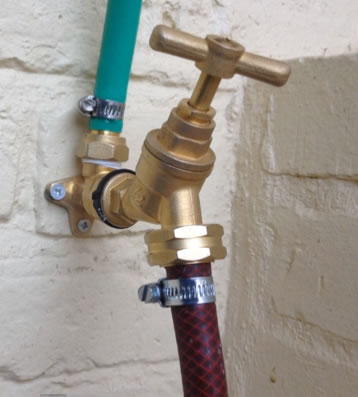
Outside tap
If you have a outside or garden tap you should make sure the pipes are lagged to avoid the pipes from freezing, also if possible turn off the isolator valve that feeds the outside tap and drain off the water by opening the tap, so there is no chance of the water freezing. You could also buy and fit a garden tap jacket that goes over the tap to keep it from freezing.
Flooding and snow be prepared
If heavy snow is forecast make sure you know where the snow shovel is, if you have one. You can also buy rock salt for your paths and driveways. Keep heating on but at a lower level to help keep the house warm. Be aware of sliding snow of thawing roofs. If you have a conservatory you should ideally have a snow guard fitted to the fascia to prevent snow sliding on the the conservatory roof and damaging it.
If major flooding is warned, take all valuables upstairs to keep them dry and safe. Put sandbags at the bottom of doors to try and reduce the amount of water getting in. Take a look at the Met office guidance for flooding.
Tags: Autumn, DIY, Downpipe, Draught Excluder, Garden Tap, Gutter, Leaves, Maintenance, Outside Tap, Painting, Roof, Roof tiles, winter
Posted in Home Improvements | No Comments »
